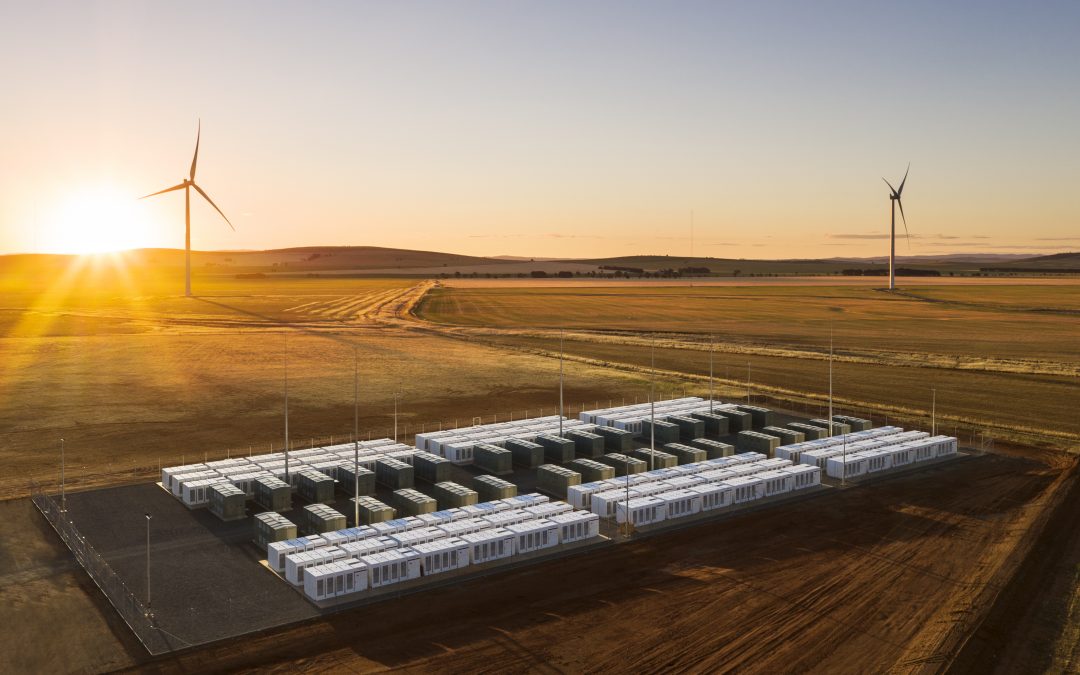The Sun Cable project, which is seeking to build a 10 GW solar farm in the Northern Territory (NT) and pipe the generated energy to Singapore, where it would potentially power 25% of the city-state, received another major boost this week with the announcement of planning approval for its utility-scale Middle Arm Battery Project.
Strength to Strength
In June 2019, think-tank Beyond Zero Emissions (BZE) published a 10 GW Vision, a report positing that the NT had the potential to build and integrate 10 GW of renewable energy over the next decade. Of course, everyone recognises the solar potential of the NT, but considering the NT was the lowest producer of renewable energy in Australia with just 5% of its generation coming from renewables, many wondered if the ambition was there.
However, only a short time later and Sun Cable announced its ambition to build a 10 GW solar farm on a sunburnt spot of the NT near Tennant Creek and use the energy to power Darwin and Singapore. From that point off, the megaproject has gone from strength to strength, moving steadily from potential to reality.
First up, Sun Cable partnered with similarly ambitious Sydney-based pre-fabricated solar developer and manufacturer 5B, a company looking to set a “land speed record” by outlaying 15 MW of its 100% portable Maverick module each day of construction. Then Australian tech billionaire Mike Cannon-Brookes announced plans from the sidelines of the United Nations Climate Action Summit in New York City to help fund the Sun Cable project. Then fellow Aussie billionaire Andrew “Twiggy” Forrest also announced plans to invest heavily in the project. Soon the NT government backed the plans, and Singapore’s largest green energy retailer, iSwitch, emerged as the first potential customer of the project.
While nobody can forget the technical mountain this project entails, nor its audacity, the project seems to be riding a wave of support and good fortune. And this wave shows no signs of dissipating after two announcements in the last week. The first, Sun Cable’s awarding of the cable route survey contract to Guardian Geomatics Pty. Ltd. And secondly, Sun Cable’s planning approval by the NT EPA for the construction and operation of the Middle Arm Battery in Darwin.
Darwin’s Big Batteries
Sun Cable CEO David Griffin told pv magazine Australia that the battery will be up to 100 MW/200 MWh in size, but that it is a size subject to change. “Sun Cable hopes to commence work on the site in early 2021,” said Griffin, “with the battery commissioned in 2022.”
This megabattery, estimated to cost $60 million, will form part of the Australia-ASEAN Power Link (AAPL) system, the integral storage system between the 10 GW solar farm and the unprecedented 3,750km underwater HVDC cable snaking its way along the ocean-bed from Darwin to Singapore.
Of course, because the battery is to form part of the AAPL, Griffin confirmed that it is “subject to completion of a series of project development milestones and a final investment decision by Sun Cable.”
However, this is not the only big battery in store for the Darwin-Katherine grid, last month NT Chief Minister Michael Gunner and the state’s Minister for Renewables, Energy and Essential Services, Dale Wakefield, announced almost $31 million in funding for a grid-scale battery and storage system to support the continuing uptake of solar.
Australia has a proudly growing history of big batteries, Neoen’s world-leading Hornsdale Power Reserve is proving an enormous success, in the first quarter of 2020 Neoen reported a revenue rise of 61% compared to the year previous. And the project, which is being expanded by 50%, through the addition of 50MW/64.5 MWh more Tesla batteries, is set increase its value still as an asset to the National Electricity Market (NEM) through the addition of digital inertia services.
On top of this, Neoen still retains hope of realising its plans for a massive hybrid power plant in South Australia (SA) featuring 1200 MW of wind, 600 MW of solar and 900 MW of battery storage. The Goyder South Project is a proposal to build a major renewable energy hub but it depends on the development of the SA-NSW Interconnector.
Sun Cable remains confident of reaching its targeted financial close date for the AAPL in late 2023.
This content is protected by copyright and may not be reused. If you want to cooperate with us and would like to reuse some of our content, please contact: editors@pv-magazine.com.









4 comments
By submitting this form you agree to pv magazine using your data for the purposes of publishing your comment.
Your personal data will only be disclosed or otherwise transmitted to third parties for the purposes of spam filtering or if this is necessary for technical maintenance of the website. Any other transfer to third parties will not take place unless this is justified on the basis of applicable data protection regulations or if pv magazine is legally obliged to do so.
You may revoke this consent at any time with effect for the future, in which case your personal data will be deleted immediately. Otherwise, your data will be deleted if pv magazine has processed your request or the purpose of data storage is fulfilled.
Further information on data privacy can be found in our Data Protection Policy.